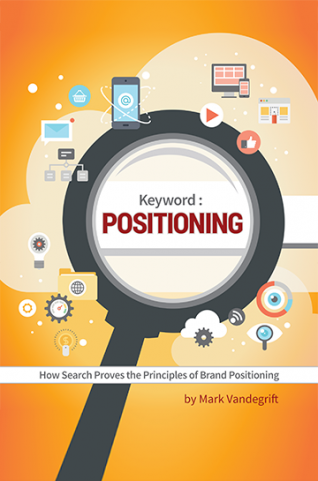You’ve likely heard the term “big data.” Loosely, the term refers to the crunching of all the data in the world to put it to good use.
The irony of this proposition is that your business and my business have a tough time making use of our own “small data.” We try to slice and dice it, hire folks to manipulate it, and do our best to say “our decisions are data-driven” with it.
However, many of us struggle to make use of the information our businesses’ own – first-party data – which may be our most valuable asset.
As sales and marketing professionals, we care most about our customer and sales data. This form of first-party data can provide us insights such as why our prospects inquired about our products and services, why they became customers, why they remained customers, and how valuable they are to us over a short and long period of time.
Now, with the forthcoming “cookie-pocalypse,” getting our first-party data house in order is urgent. Why? Because third-party data – data you do NOT own – may become a thing of the past.
Third-party data will diminish as consumers opt out of capturing their casual, “no-permission-granted” digital traffic behaviors. Consumers have already started opting out and are increasing their privacy settings.
A recent CNBC article states only 38 percent of users opted IN to be tracked for ads once the new Apple privacy update was rolled out. That means the other 62 percent opted OUT.
Customers are now more aware and educated as to how their data is being shared without their permission, and they don’t like it, with good reason. Who wants their information to go to strangers without permission and with whom they have absolutely no relationship?
So, act fast to utilize the first-party data you possess, and create value from it, or your marketing efforts may struggle without some of the crutches previously provided with third-party data.
The Most Valuable Data in the World!
First-party data, in layman’s terms, is information that a business collects on its own through its own channels, such as website visits, app usage, call center interactions, sales transactions, and customer surveys. This data belongs to the business and can be used however the business legally sees fit. Amazingly, it’s rarely put to power as a sales and marketing asset.
What Makes First-Party Data So Valuable to Businesses?
First-party data is valuable because it gives businesses a direct line of sight into their customers’ wants, needs, and behaviors. This data can be used to improve the customer experience, personalize marketing efforts, and drive sales. Additionally, first-party data can be combined with other data sources to get a more complete picture of target audiences.
Data collection has been a hot topic for years, but it seems to have reached a boiling point. As more and more stories come out about data being used for nefarious purposes, people are starting to get concerned about their own data and who it gets shared with. People feel their data is being collected without their knowledge or consent and used in ways they don’t fully understand.
This has led to calls for greater transparency around data collection and usage. People want to know why their data is being collected, how it’s being used, and what safeguards are in place to protect it. They also want the ability to opt out of data collection if they so choose.
It’s becoming clear that data transparency is no longer simply nice to have … it’s a necessity. If companies want to keep people’s trust, they need to be open and transparent about how they’re using their information.
The Keys to the Marketing Future Are First-Party Data.
The first key to marketing with first-party data is transparency. As hinted above, consumers want to know what you know about them. If you can give them a way to see the data you possess about them and enable them to add, edit, or delete it, do it. This may be in the form of an online account, a customer portal, or having a customer hotline available. Because of GDPR and CCPA rules, you’ll have to learn all you know about a customer, so finding and exposing this data to each customer should not be that great of a task.
The second key to marketing with first-party data is personalization. If you know something about someone, you don’t tend to talk in generalities. If you know they’re a sports fan, you talk sports. If they’re foodies, you talk food. It takes a bit of work, but bulk-personalization is a thing, and marketers have the platforms available to make their communications more personalized.
With first-party data, honor the time you’re taking from a customer or prospect and speak to them about the product and/or service they care about. Quit spamming them with everything you want them to know about your company. When you honor the relationship, a customer will want to do more business with you.
The third key to marketing with first-party data is customer service. After you win a customer, make the effort to know the customer. When a customer reaches out, provide the data to your sales and customer service teams so there isn’t confusion about order history, service calls, and other data you should already know.
This means your data tracking must be in order, so your data output is top-notch. Garbage in – garbage out. Good data in – good data out. Make it easy to capture good data, then the output takes care of itself.
Are You Missing Out?
If you’re not already leveraging your first-party data, now is the time to start. This valuable type of data can give you insights into your customers that you can’t get anywhere else. There are very easy ways to organize, analyze, and deploy the data you have, but it takes intention, attention, and some detail-oriented team members.
Innis Maggiore understands first-party data and its value. If you need assistance leveraging this major asset, give us a call or contact us online.



